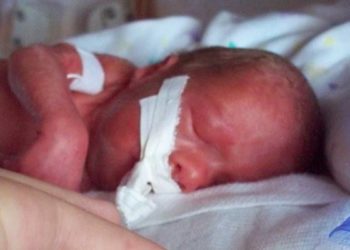Significant number of wrong-patient errors in radiology reports
1. In a retrospective review of over 1.7 million imaging examinations and interpretations, the estimated incidence of near miss imaging and interpretation errors was 4 per 100 000 imaging examinations.
2. The majority of near miss-errors were due to mislabeling-misidentification of images, which most often occurred with portable radiographs, and was associated with a significantly higher time to recognition compared to dictation-related near-miss errors.
Evidence Rating Level: 3 (Average)
Study Rundown: Medical “near-misses” are errors that are caught prior to resultant injury or damage to a patient. Near-miss events in radiology primarily involve mislabeling-misidentification errors, which are due to the incorrect allocation of radiographic images from one patient to another patient’s chart, or dictation errors, which are due to the interpretation of one image being incorrectly attributed to another patient’s imaging study. Unfortunately, the incidence of these near-miss errors has not been well established in the literature. The purpose of this study was to estimate the prevalence of these radiology near-misses in 2 large academic centers in the United States. The study retrospectively reviewed over 1.7 million studies from 2009 to 2013, searching for reports that included the words “incorrect patient” or “wrong patient.” Each subsequent report was reviewed and the frequency of mislabeling-errors or incorrect dictation errors were calculated.
At the conclusion of the study, 67 eligible reports were found to contain near-miss errors resulting in an estimated event rate of 4 per 100 000 examinations. Within this group, 52% of studies had a mislabeling-misidentification errors and 48% had dictation errors. The majority (56%) of near-miss errors were made with portable chest x-ray radiographs. No errors resulted in patient harm; however, the median time for recognition of mislabeling errors (22 hours) was significantly higher compared to dictation-errors (0 hours). The results of this study demonstrate that that there remains a significant number of near-miss errors in the imaging acquisition workflow. Furthermore, given the search criteria and the retrospective nature of the study, it is likely that the near-miss incidence has been underreported. Portable radiographs represent a significant burden of near-miss errors, and this findings supports the implementation of further quality improvement measures to reduce misidentification errors with image acquisition by this modality. New, user-friendly, anonymous reporting systems along with increased focus on quality improvement and error-reporting may be required to prospectively determine the true incidence of these near-miss errors.
Click to read the study in AJR
Relevant Reading: Errare humanum est: frequency of laterality errors in radiology reports
In-Depth [retrospective cohort]: This was a retrospective study of the frequency of near-miss errors in 2 large academic hospitals in the United States between 2009 and 2013. The radiology information systems from both hospitals were scanned for imaging examination reports that included the phrases, “incorrect patient” or “wrong patient”. Each positive study was reviewed and categorized as either a mislabeled-misidentified patient error or an incorrect dictation error. Each report recorded the specific modality, time of error, as well as time to recognition of error. Overall, 1 717 713 examinations occurred during the study period. Sixty-seven reports matched the search criteria (incident rate 4 per 100 000). Portable chest radiography was the modality with the highest number of near-miss errors; radiography was involved in 69% (24/35) of the mislabeling-misidentification errors and 44% (14/32) of the dictation errors. The median time of recognition of mislabeling-misidentification errors was significantly higher than that of dictation errors (22 hours versus 0 hours; p = 0.02).
Image: PD
©2015 2 Minute Medicine, Inc. All rights reserved. No works may be reproduced without expressed written consent from 2 Minute Medicine, Inc. Inquire about licensing here. No article should be construed as medical advice and is not intended as such by the authors or by 2 Minute Medicine, Inc.






